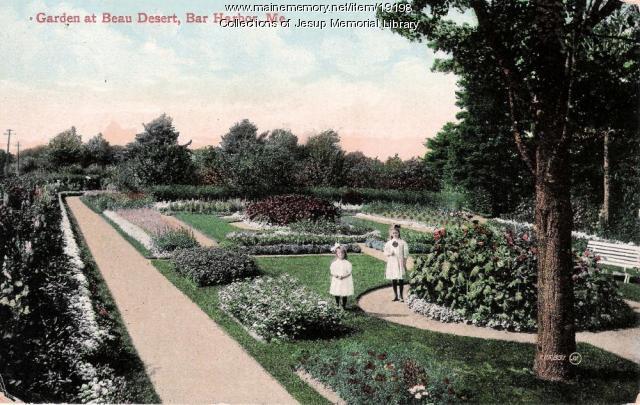“Paradise Lost, Paradise Found: the landscape of Mount Desert Island” by Patrick Chassé.
Mount Desert Island was a place of environmental diversity and dramatic landscape well before it became a favorite summering place of Indigenous peoples. European settlers made broad use if its natural resources, but the discovery by artists in the 19th century brought word and vision of its powerful natural beauty to a greater public. The development of the area as a summer resort and prestigious destination was the impetus of the garden and landscapes we find there at the start of the 21st century, and the legacy of Acadia National Park.
Bar Harbor was called Eden for 1796 to 1918, and the last fifty years of that period was in many ways a “Golden Age” of architectural and garden expression in this extraordinary landscape. Through surviving photographs and drawing we revisit a number of Bar Harbor’s most famous gardens – most of which have been lost forever to neglect and redevelopment. A few survive, other have been reincarnated, in a new form or place, and fragments of others remain locally as reminders of a rich era. Ultimately, like a good family tree, they help us to appreciate a spirit and tradition of creating gardens at the turn of century that still illuminates and inspires new gardens at the turn of the next century.

Garden at Beau Desert, Bar Harbor, ca. 1900
Jesup Memorial Library